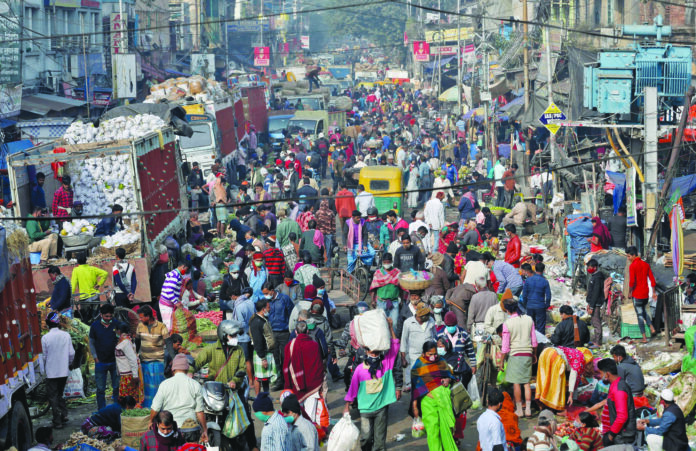Overpopulation is an ever-growing issue that affects multiple countries around the globe, including India. From 1955 to 2022, China remained the most populous country in the world, followed by India.
However, the April 2023 report shows that India’s population has dramatically changed. The country pulled ahead and surpassed its neighbour with a 1.428 billion population, a 0.68 percent increase from the previous year, leaving behind China with a 1.425 billion population. The restrictive policies that limited families to three children have vividly reduced China’s birth rate. On the contrary, India has no such effective policies to curb the population surge; hence the number is still increasing.
While the overpopulation monster is having its way, India is oblivious to its severe implications. The country cannot compete with China because of its huge labour force to yield demographic dividends as the majority of the Indian population is uneducated and below the poverty line. It has been predicted that by 2050, the world population will be 9.8 billion, and India will have a population of 1.7 billion.
This raises the issue of how the Indian government will solely impose its will on the most religiously diverse people. Overpopulation will certainly have a substantial impact on several aspects of the country including its society, economy, environment, and infrastructure.
First of all, when the population grows, the basic needs of individuals increase, which puts huge pressure on the country’s limited resources, such as water, food, energy, and raw materials. This leads to resource depletion and the subsequent emergence of inflation. Due to low income, people with huge families cannot sustain themselves for too long against inflation. Therefore, the substantial financial load tends to push households to reduce their quality of life,such as taking less care of their health, which makes them more vulnerable to life-threatening diseases such as tuberculosis, diarrhoea, and malaria.
In conclusion, overpopulation is an ongoing issue in India, and the country is unaware of its rising dangers. There are many countries with huge populations but it mainly depends on how it is managed and addressed. For instance, the way China has developed birth policies and kept modifying them to control their population is an example for the whole world. Similarly, India needs to show a serious concern to tame the population monster. The government must develop strong regulations and limiting policies to prevent the issue from mounting further before it becomes a catastrophe for the country.
Another downside of overpopulation for India will be unemployment. Overpopulation reduces job opportunities for people in private and government organizations. For instance, a room that can hold 10 people cannot hold 15 or 20 people; similarly, organizations are restricted in terms of their number of employees. According to an Indian economist, “India’s youth bulge is a double-edged sword. To make it productive, India needs to create enough job opportunities for the masses– a challenge at which the country is currently failing.” Due to the unavailability of jobs, people find robbery, shoplifting, looting, and kidnapping as fine alternatives to jobs, resulting in more chaos and violence.
Overpopulation also fuels urbanization, bringing along many consequences. According to the 2022 reports, urbanization in India has increased by four percent in the last decade, which shows that people have moved towards cities to find work and make a living. It builds pressure on the cities; creating complications such as congested housing, traffic blockage, and improper sanitation services. The progress of any state depends mainly on its cities, where the structure is laid down in such a way that makes the processes very smooth. However, overpopulation makes it harder to achieve the objectives set by a state for a specific period of time– which results in poor and sluggish development.
Another huge problem that overpopulation may contribute to, is environmental degradation. India moved up to the eighth-most polluted nation in the world according to the World Air Quality Report 2022, with an average annual PM2.5 concentration of 53.3 micrograms per cubic metre, more than 10 times the level set by the World Health Organization. It occurs mainly because of the increased demand for natural resources and energy, which intensifies climate change and adversely affects the natural environment.
Moreover, India is ignorant of the religious crisis; handling a densely populated country with varied interests is a multifaceted issue. The country consists of Hindus, Muslims, Buddhists, Christians, and Jews, among others. Such differences can lead to intensified tensions, as we have witnessed over the past year that Hindu religious processions have frequently descended into violence and chaos across India. It can also influence the decisions of the Indian military in the region. Pakistan in particular, has a long history of conflicts with India, and the tensions between both countries can be intensified by population pressures.






















